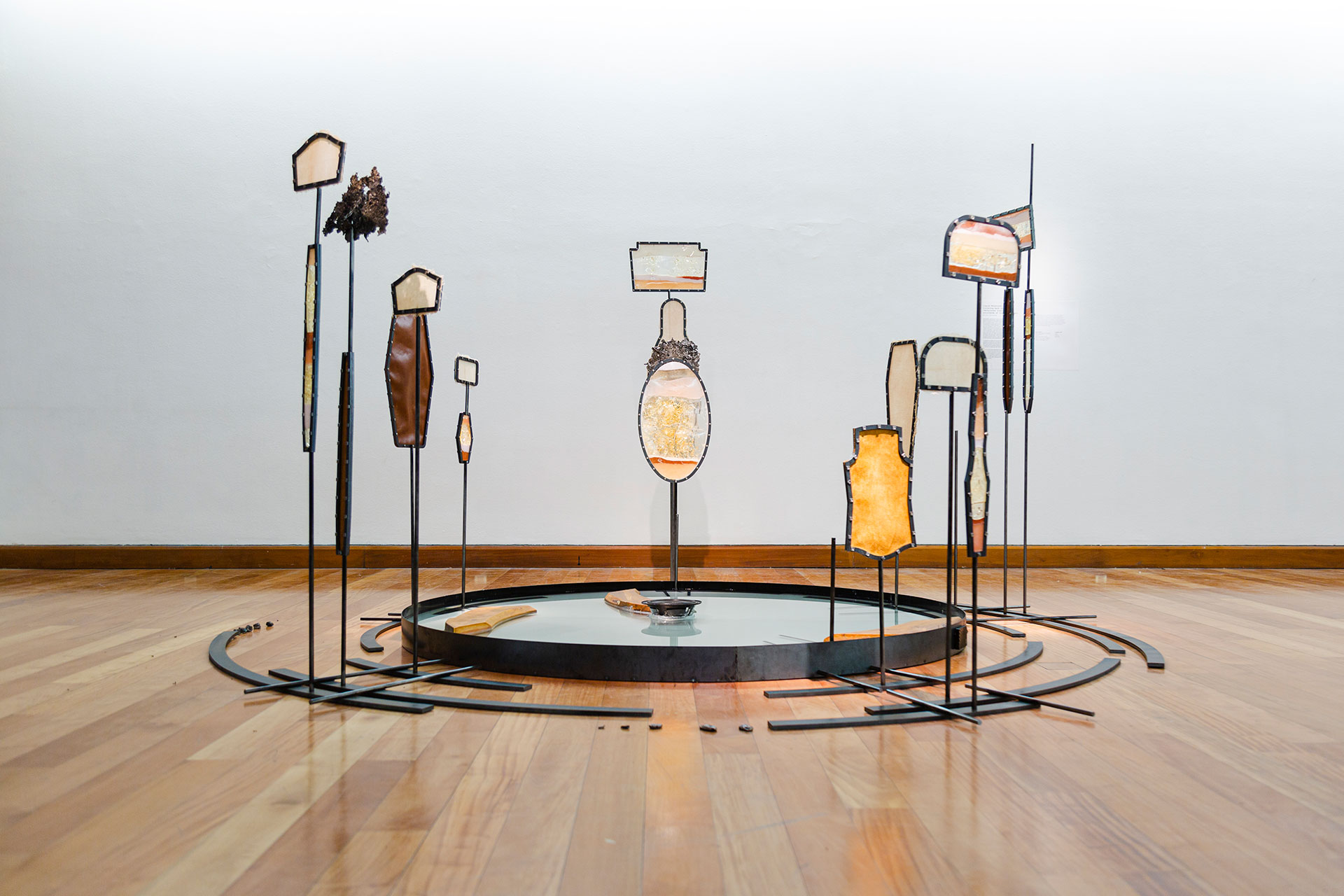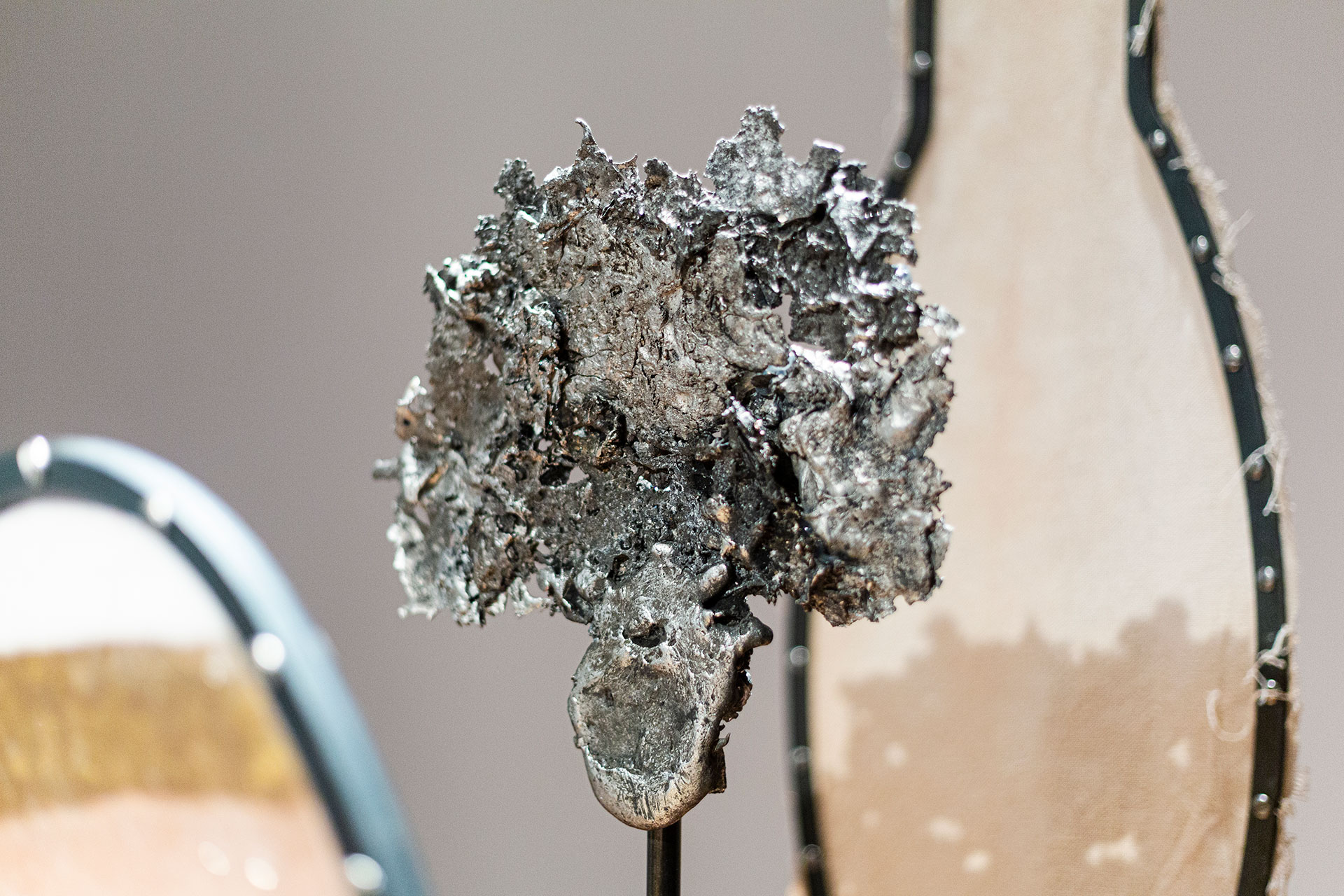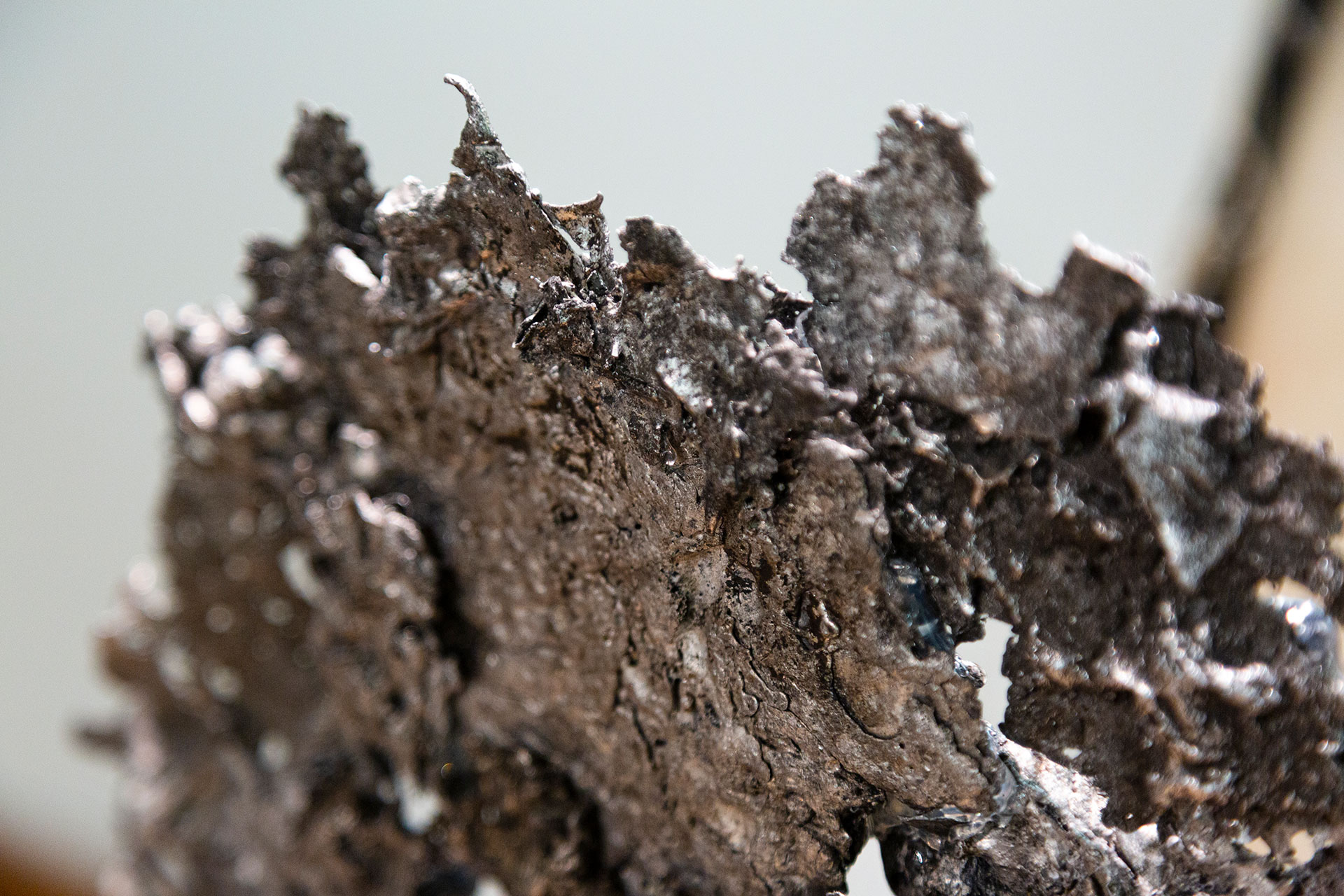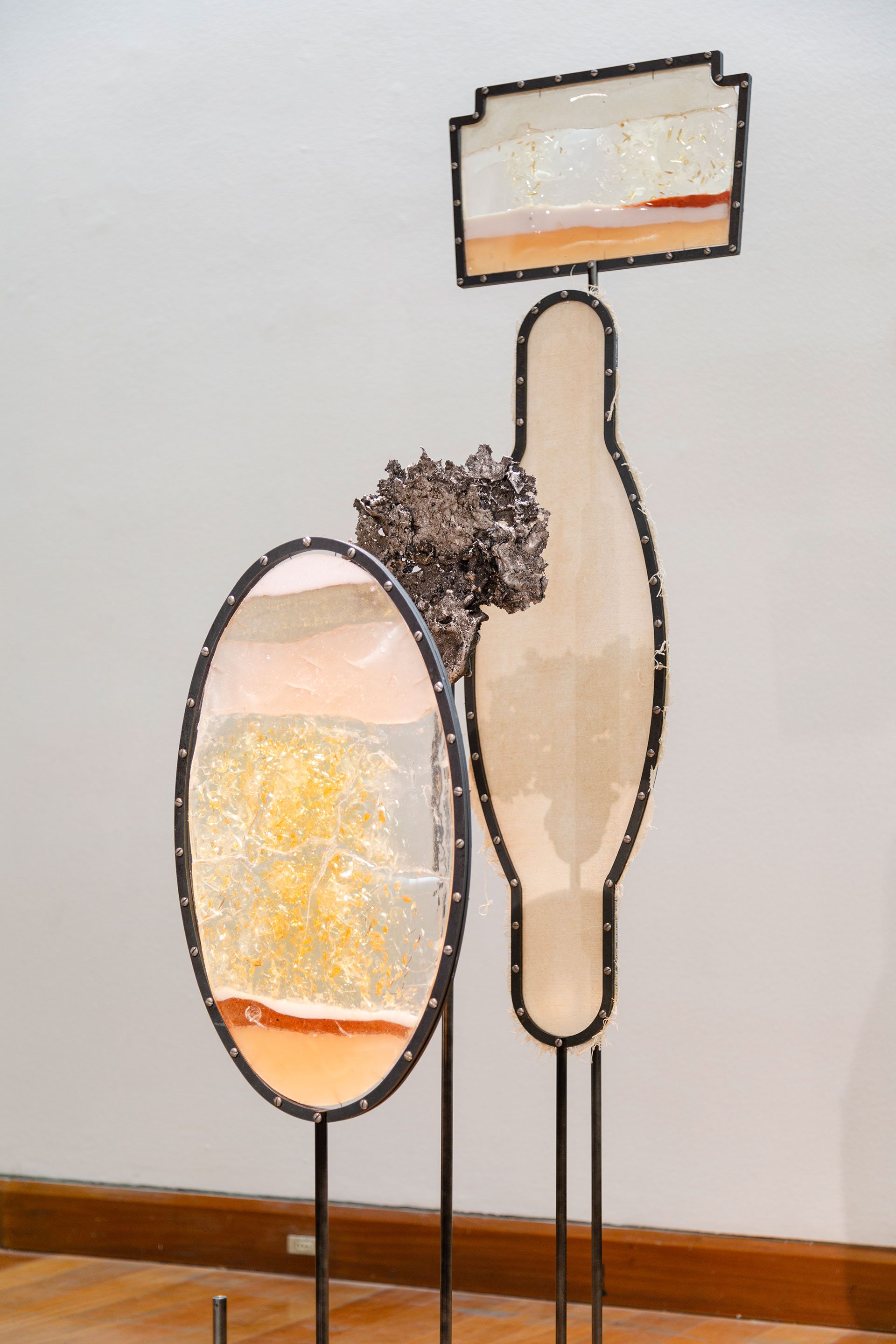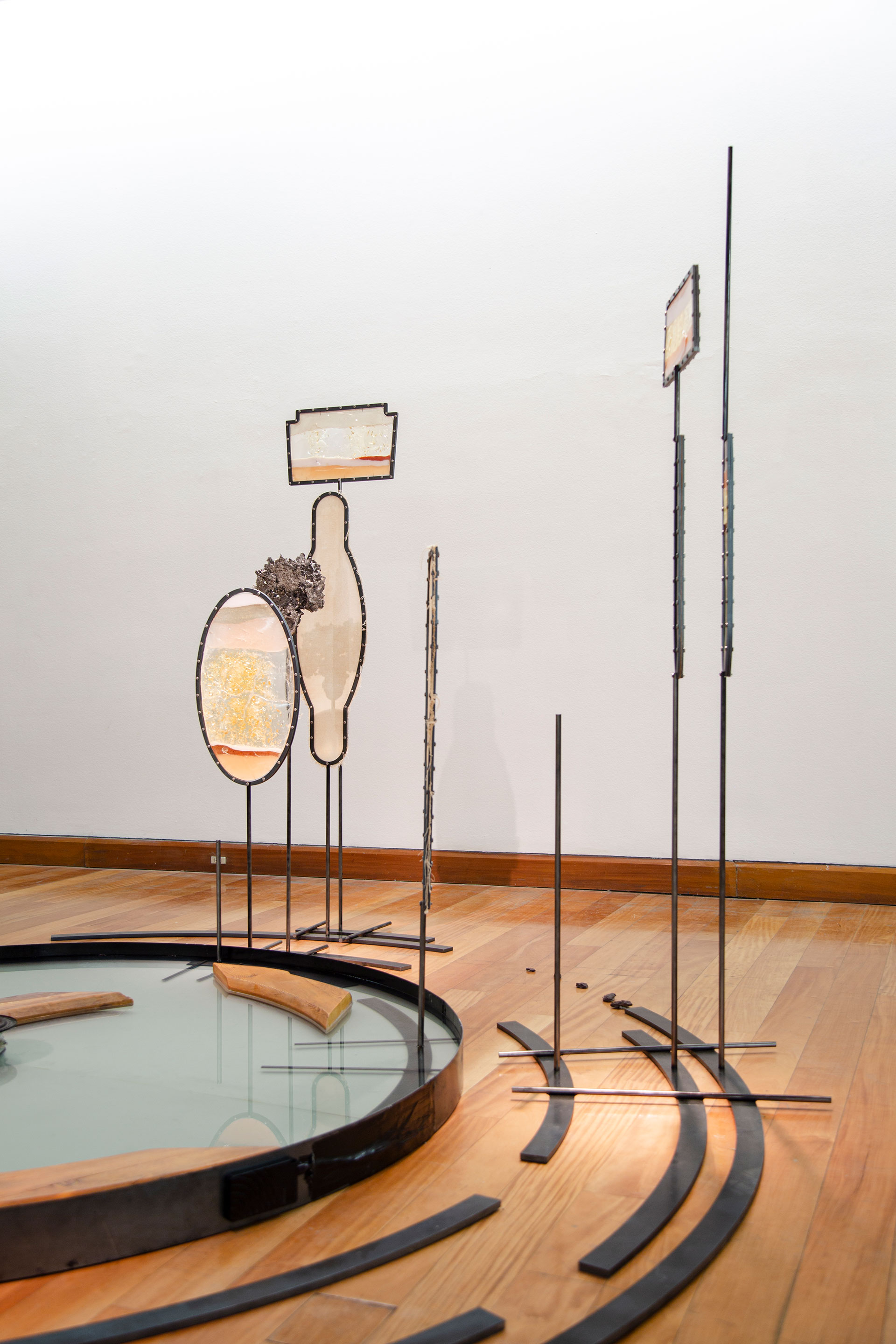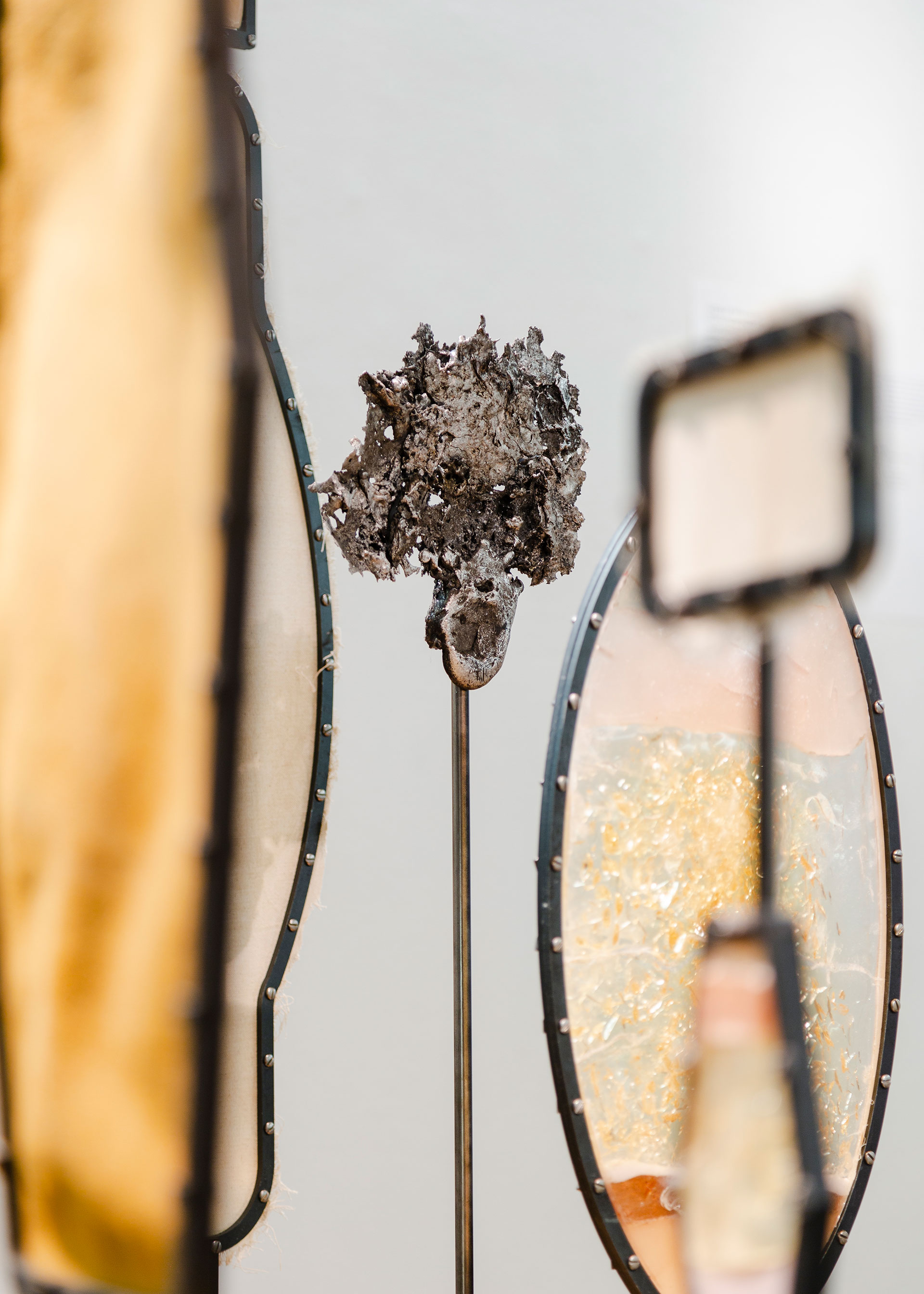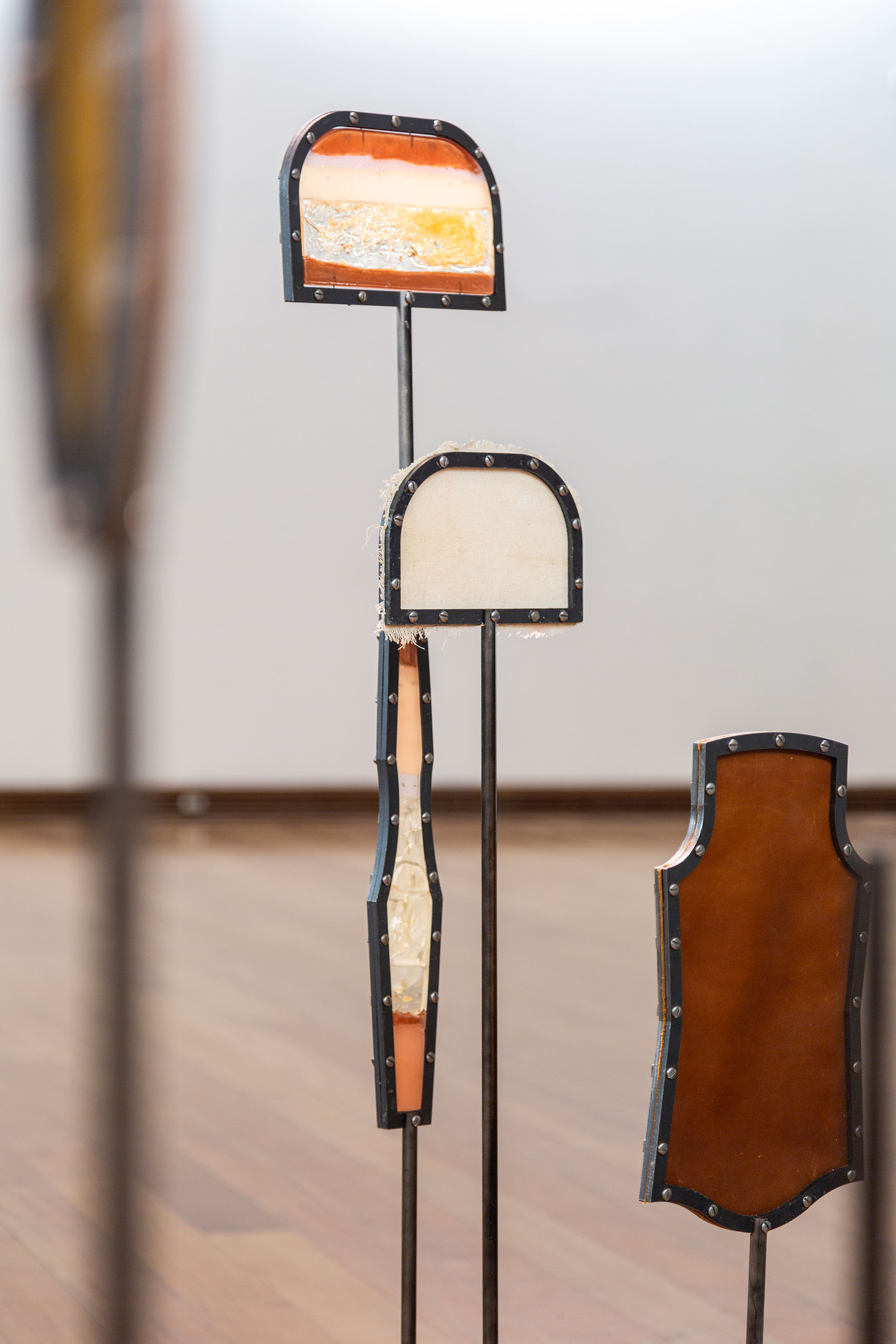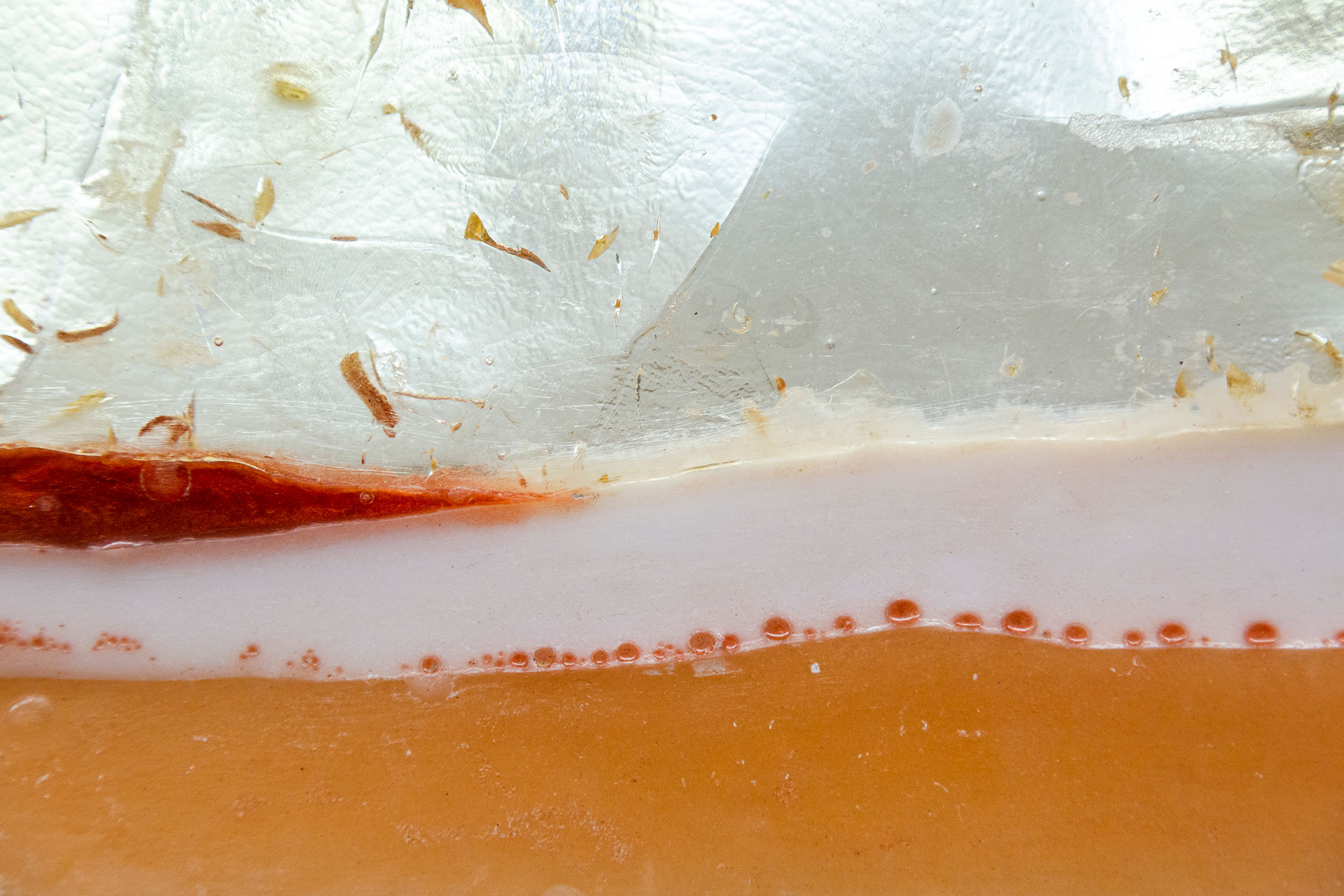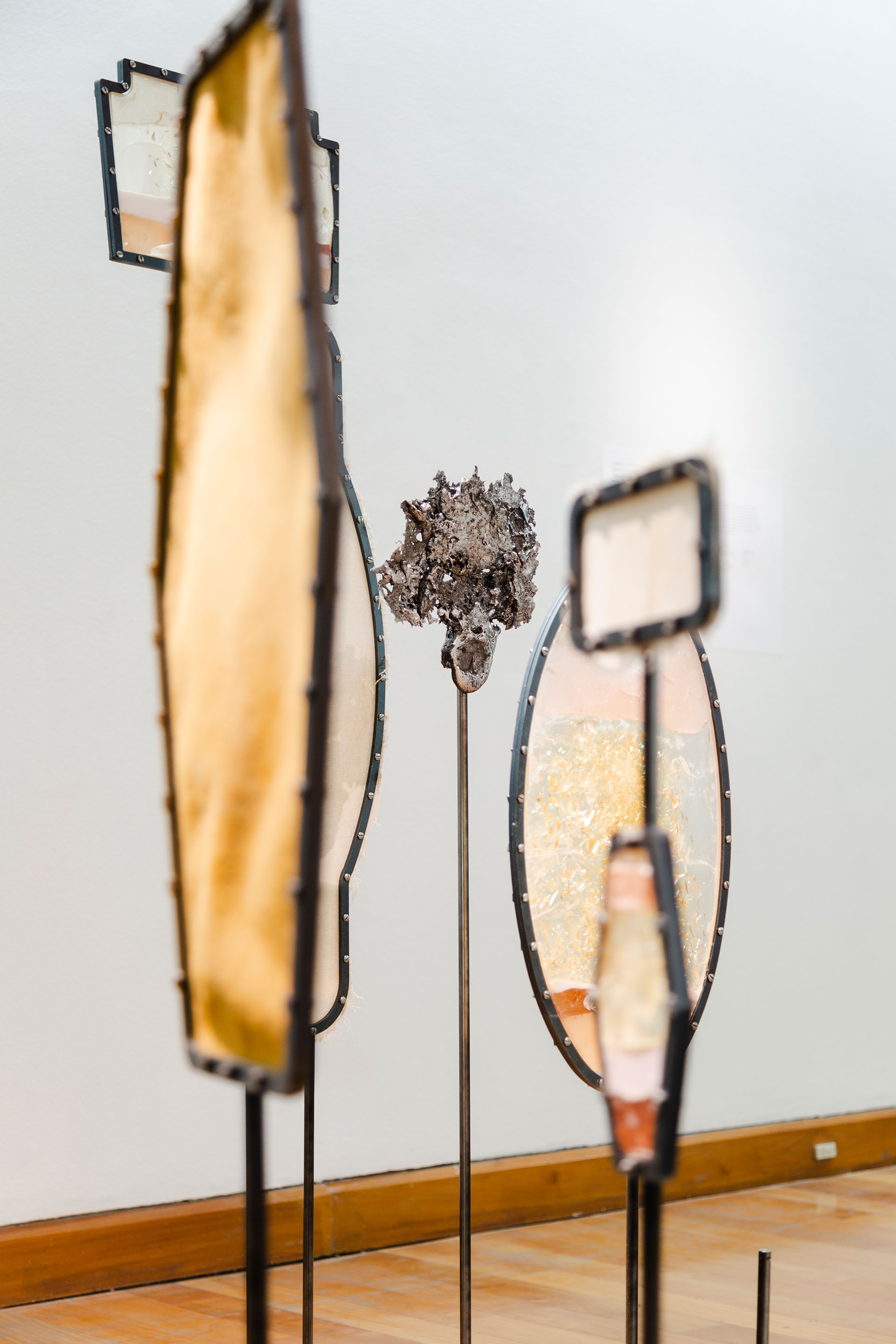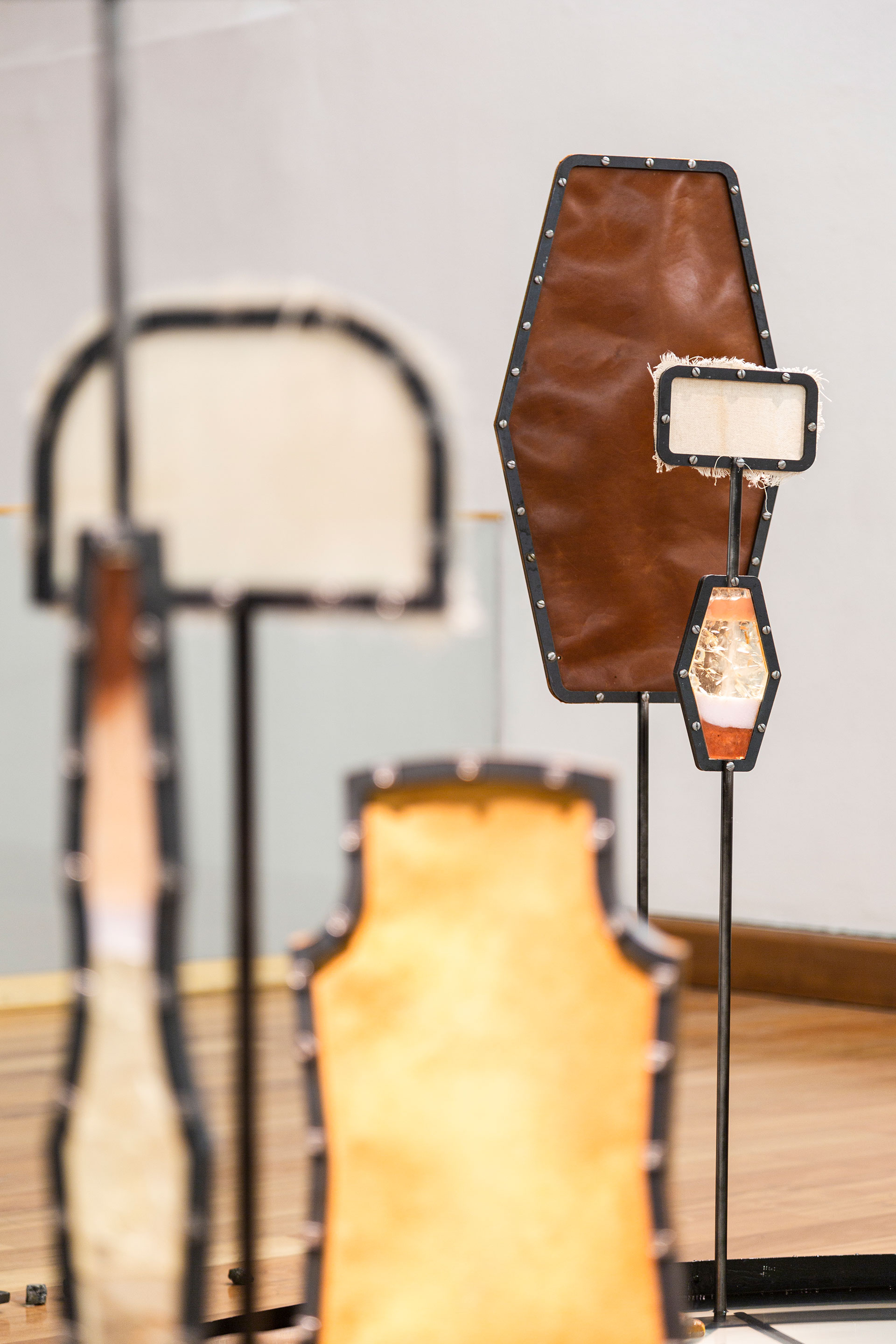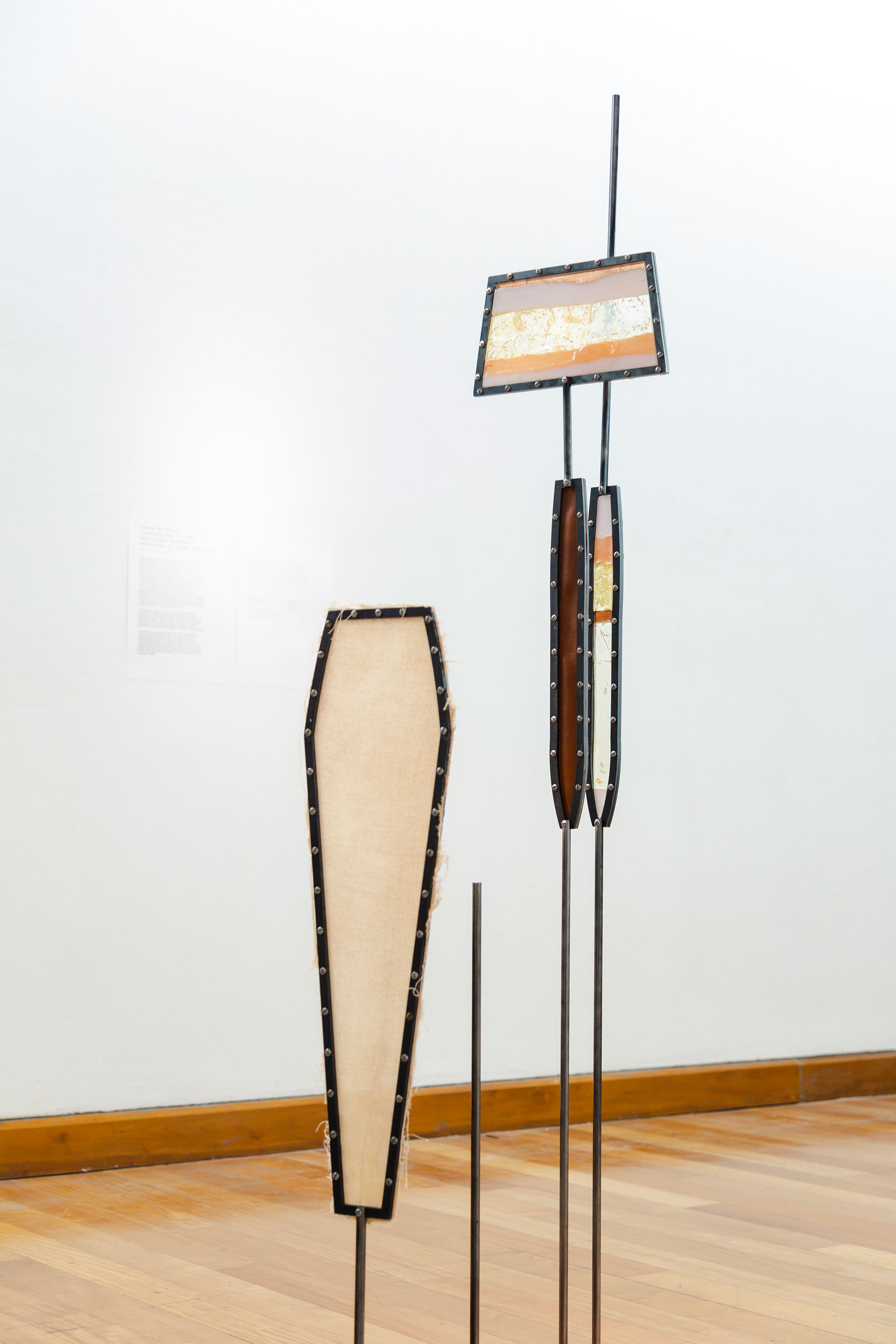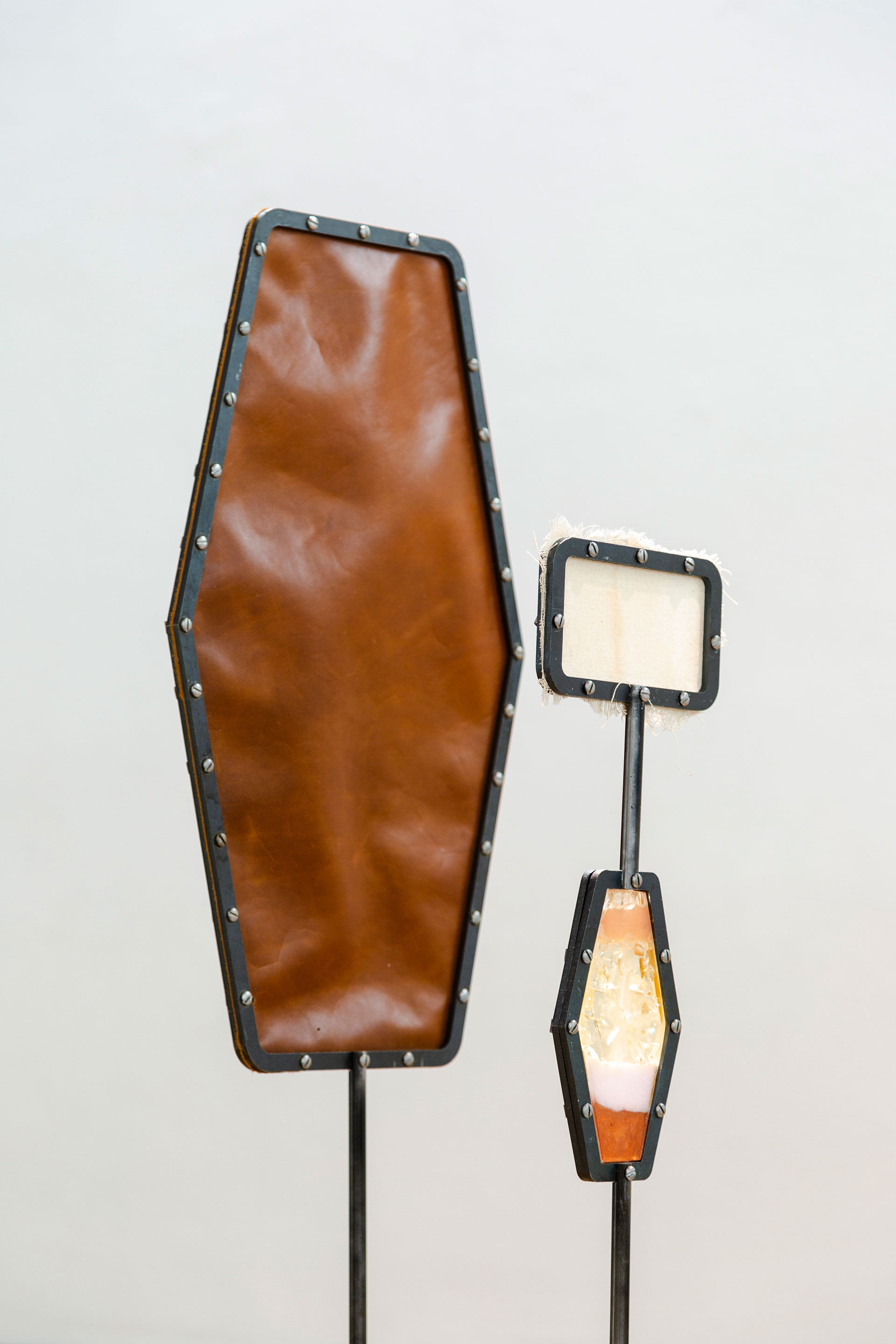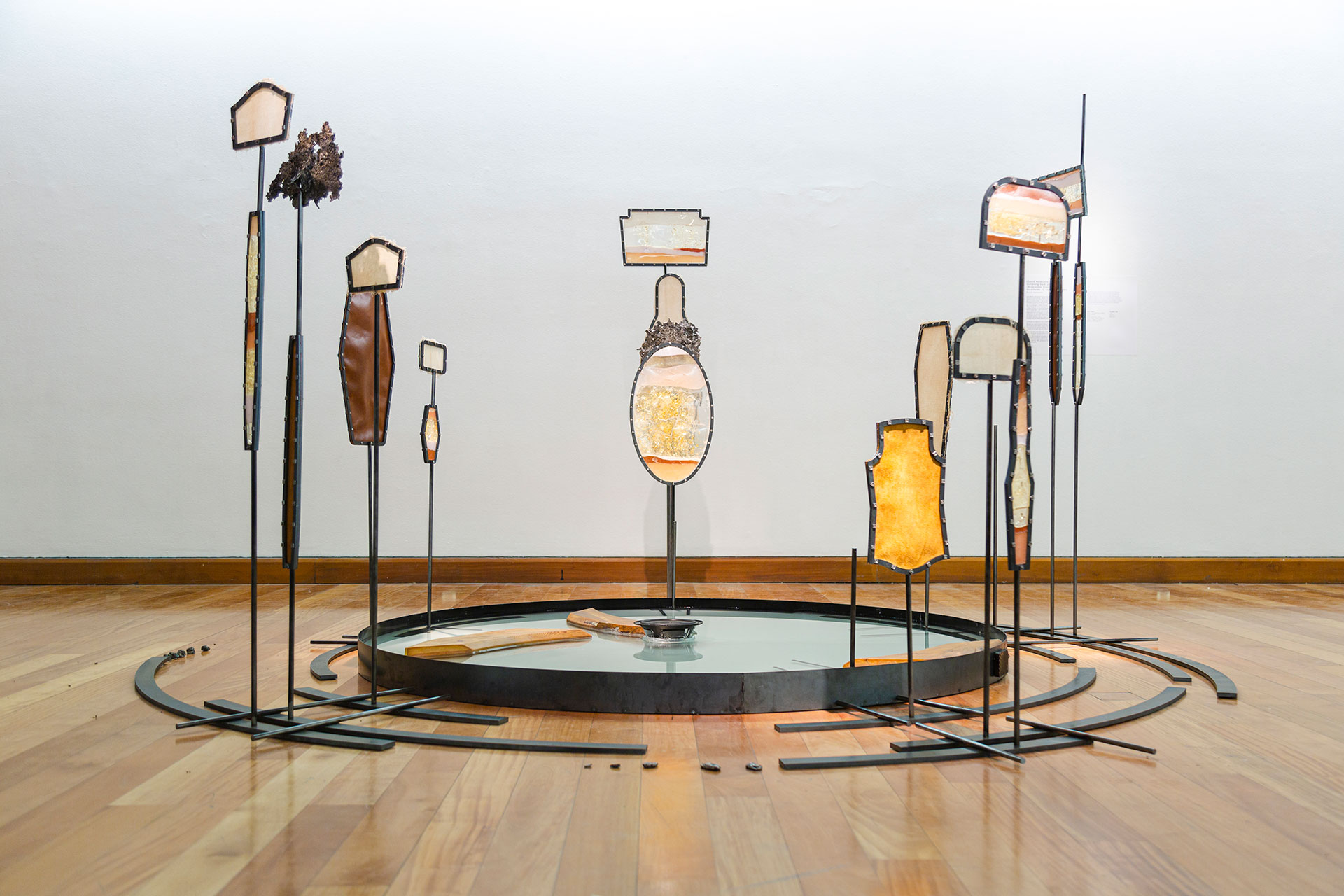14th Media Arts Biennial of Chile
Liquid Relations, Listening Back in Time stands as a site-specific piece created during the socio-political upheaval in Chile, reflecting Kalsmose’s fascination with the human condition amidst global events. Kalsmose integrates physical remnants and found objects. The work consists of lithium salts and resin, water, meteorites, steel, leather, gauze, found remains from the political demonstrations in Santiago in 2019, a loudspeaker, and NASA’s sound recordings. It measures 350 cm in diameter.
The work explores themes of personal identity and the connections between self, family, and the cosmos. The iron figures, with their anthropomorphic forms, can be associated with family members of varying heights and shapes. They are arranged in elliptical orbits above curved metal and wooden floor pieces, imitating the course of our planets and the rings of Saturn. At the center of the installation, a speaker emits sounds derived from radio and plasma waves recorded by NASA’s Cassini spacecraft near Saturn's rings. The incorporation of harmonious sounds stems from the idea of a cosmos created through harmonious proportions.
The installation combines industrial and archaeological elements, connecting human transience with the profound continuity of the Earth. Kalsmose works with materials from lived reality, such as remains from demonstrations in Santiago, Chile – where she was personally present – and combines them with archaeological materials from earlier times and outer space, such as meteorites. Although these materials can be linked to specific moments, they extend across multiple temporalities and thereby reflect how we are connected to larger cycles of existence.
This work reflects years of investigation into materiality, identity formation, and relational interconnectedness. Kalsmose explores family not only as a social unit but as a metaphysical one. Liquid Relations, Listening Back in Time gestures toward speculative pasts and futures—moments when matter, memory, and relationships merge into form. The installation becomes a kind of time-instrument, sounding into the unknown while listening back through geological and cultural time. Rather than separating scientific knowledge from emotional truth, the work suggests that identity is neither fixed nor isolated but shaped by everything around and before us. It reminds us that we are part of systems we both form and are formed by—and that listening, at its deepest, is an act of relational recognition across distance, scale, and time.
Working continuously at the intersection of art and science, driven by intuitive sensations, Kalsmose seeks to validate her art scientifically, intertwining perceptions of self with the science of the universe. Her works contribute to theoretical research fields reevaluating anthropocentrism and human essentialism. Kalsmose underscores the immanent quality of materials in her installations, creating spaces for theories of circularity and connectedness through artistic language. Her artworks provoke dialogue and prompt viewers to contemplate internal and external realities. By allowing non-physical concepts to occupy physical spaces, Kalsmose invites viewers to engage actively with her installations.
